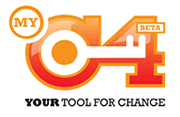![]() Back in January I received an email from a Lendingclub employee in reaction to this article, where I wrote:
Back in January I received an email from a Lendingclub employee in reaction to this article, where I wrote:
“… Several .. p2p lending services show clear signs that default levels will (or have) surpassed the initially published percentages of defaults to be expected based on external data. … The one exception from the rule is Zopa UK, which successfully manages to keep defaults low…”.
The email questioned why Lending Club was not mentioned along Zopa for keeping defaults low and invited me to discuss this. On Jan. 21st I replied with the following (based on numbers which I compiled from Lendingclubstats.com – these will have changed slightly since then by now):
As sample let’s look at the loans Lending Club issued in Dec. 2007. Total loan amount is 1,322,850 US$.
The status of these is:
a) Current 823,800 (62,3%)
b) Fully Paid 168,150 (12,7%)
c) Late 82,500 (6,2%)
d) Defaulted 248,400 (18,8%)These loans were approx. 2 years old (in January) and will run about 1 year more.
Is it a fair assumption that in Jan 2010 22% (or more) of the loans issued will have defaulted? I know I did not take the final step to split these numbers by credit grade, but if I would have done that, are you arguing that the default levels are low (or at least lower than the scoring predicted in Dec 2007)? If Dec. 2007 is for some reason a bad performing month, feel free to do the above with any other month from 2007 for the discussion and we continue with these numbers.
Though I was promised a detailed answer and I did follow-up several times, so far there has been no reply. I am not saying that Lending Club defaults are too high for lenders to make a profit. My points are:
- Default levels at Lending Club are likely higher than initially expected
- The published default rates on Lending Club and other p2p lending platforms are often averages in relation to all running loans (including recently funded ones). This figure is skewed, if the service is growing fast and lenders might misinterpret it. A better evaluation is based on taking a sample of older loans (e.g. based on one month of origination)
- ROIs for Lending Club lenders will be, once their investments mature, likely lower than the average shown at the moment at the Lending Club statistic page.

